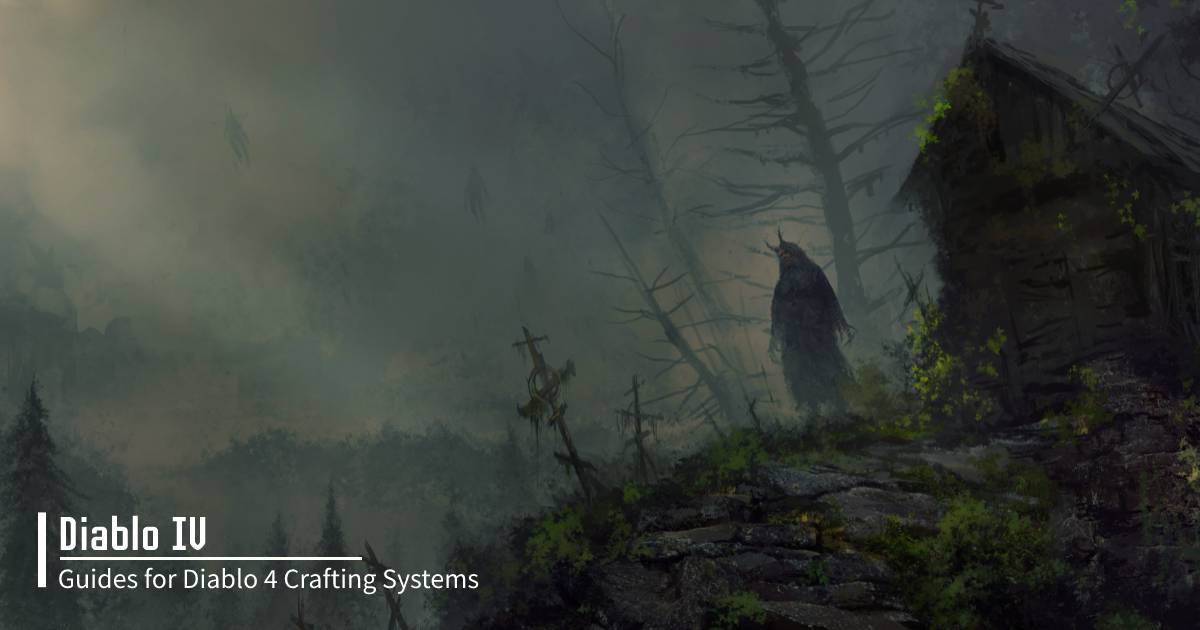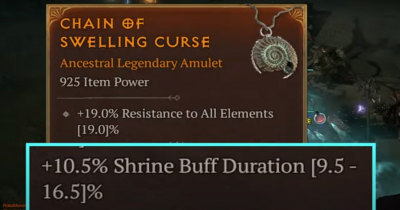Guides for Diablo 4 Crafting Systems
Diablo 4 is the highly anticipated sequel to the popular action role-playing game Diablo 3. With so much hype and anticipation, players have been eagerly awaiting the release of the game's crafting system. Fortunately, the game developers have released some information on the various crafting systems included in the game. In this guide, LOLATNK will be discussing the different crafting systems available in Diablo 4, as well as why they are included.

Alchemist
The first crafting system available in Diablo 4 is the Alchemist. Located in major cities and settlements, the alchemist allows players to upgrade their health potions, craft elixirs, craft incense, and refine resources. In Diablo 4, there is a greater focus on resources, with players being able to gather resources from the open world, as well as from creatures and world bosses.
The first thing players can do at the alchemist is upgrade their health potion. This process requires players to be a certain level and will take increasing amounts of resources. As the health potion is upgraded, the initial healing and the health gain over time will both increase. In addition to upgrading health potions, players can also craft elixirs. Elixirs grant temporary buffs to various stats, as well as a small experience boost. These buffs can range from increasing armor and thorns to increasing attack speed.
The alchemist also allows players to craft incense. Rather than an aura around the player, incense buffs are given to the entire group. Much like elixirs, incense buffs can range from increased damage to increased resistance to different elements. Finally, the alchemist allows players to refine resources. This process requires players to take raw resources and turn them into higher-tier resources, which can then be used in other crafting methods.
Blacksmith
The next crafting system available in Diablo 4 is the Blacksmith. At the blacksmith, players are able to craft armor and weapons, upgrade their armor and weapons, salvage items, and repair their gear. Repairing gear costs gold and removes any durability lost during death or combat. Salvaging items allows players to get rid of gear they no longer want, in exchange for resources. When crafting armor and weapons, players can use resources to create the gear of their choice. Upgrading armor and weapons require Diablo 4 gold and materials and will increase the affixes and base damage/armor of the item.
Jeweler
The Jeweler is the third crafting system available in Diablo 4. Much like the Blacksmith, the Jeweler allows players to craft jewelry and gems, add sockets to gear, unsocket gems, and upgrade jewelry. Jewelry upgrades increase resistances and stats rolled on the item, while gems provide various buffs depending on the item they are socketed into. Crafting gems follows a similar process to Diablo 3, where players upgrade a lower-level gem into a higher-level gem. Finally, the Jeweler allows players to add sockets to gear using scattered prisms, which can only be obtained from world bosses.
Enchanting
The enchanting system works similarly to Diablo 3 in that one affix on a piece of gear can be selected and then infinitely rolled - though with some limits - in order to find the best-rolled version of that affix. Re-rolling an affix becomes more expensive with each successive roll, so it's important to find the best version quickly.
Crafting nightmare sigils is an important part of the endgame in Diablo 4, as these keys can turn a dungeon into a nightmare dungeon. This makes it more difficult but also rewards players with more loot. There are multiple tiers of nightmare sigils, from common to sacred and ancestral, each of which has its own craft. These sigils can be salvaged for resources if players find one that is not suited for their build.
Legendary powers
legendary powers are a big part of the occultist system. Every legendary piece of gear has a power that can be extracted and then imprinted on another item, turning a rare item into a legendary one. The Codex of Power houses a selection of legendary powers which can also be imprinted - though they are the lowest rolled versions - and can be unlocked through completing dungeons.
Overall, Diablo 4 has a variety of crafting systems for players to explore and use. It is important to note that the developers can always change or balance these systems, so be sure to keep an eye out for any updates. With its diverse crafting systems, Diablo 4 looks to be a great game for players to explore and craft the perfect gear.
Most Popular Posts
- Diablo 4 Addons: Useful Website for Build and Crafting
- Diablo 4 Keybinds Mouse Wheel and Left-click Setting Up Guides
- Diablo 4 Ruins of Eridu Dungeon: Farming Legendaries, Unique Items, Gold, and XP
- Diablo 4 EndGame Boss Echo of Lilith Fight Challenge Guides
- Diablo 4 Items Guide: How to Evaluate Item Quality
- Diablo 4 ALT Character: Tips for Efficient Leveling and Loot Farming
Popular Category Lists
- Path of Exile / (873)
- Diablo IV / (702)
- Runescape / (344)
- New World / (172)
- WoW Classic SoD / (171)
- Guild Wars 2 / (159)
- Elder Scrolls Online / (138)
- FFXIV / (135)
- World of Warcraft / (65)
- WOW Classic / (43)
- Elden Ring / (40)
- Throne and Liberty / (36)
- SWTOR / (35)
- Albion / (35)
- Last Epoch / (32)
- League of Legends / (30)
- Dark and Darker / (28)
- Fallout 76 / (27)
- WotLK Classic / (23)
- Genshin Impact / (22)





 0
0









